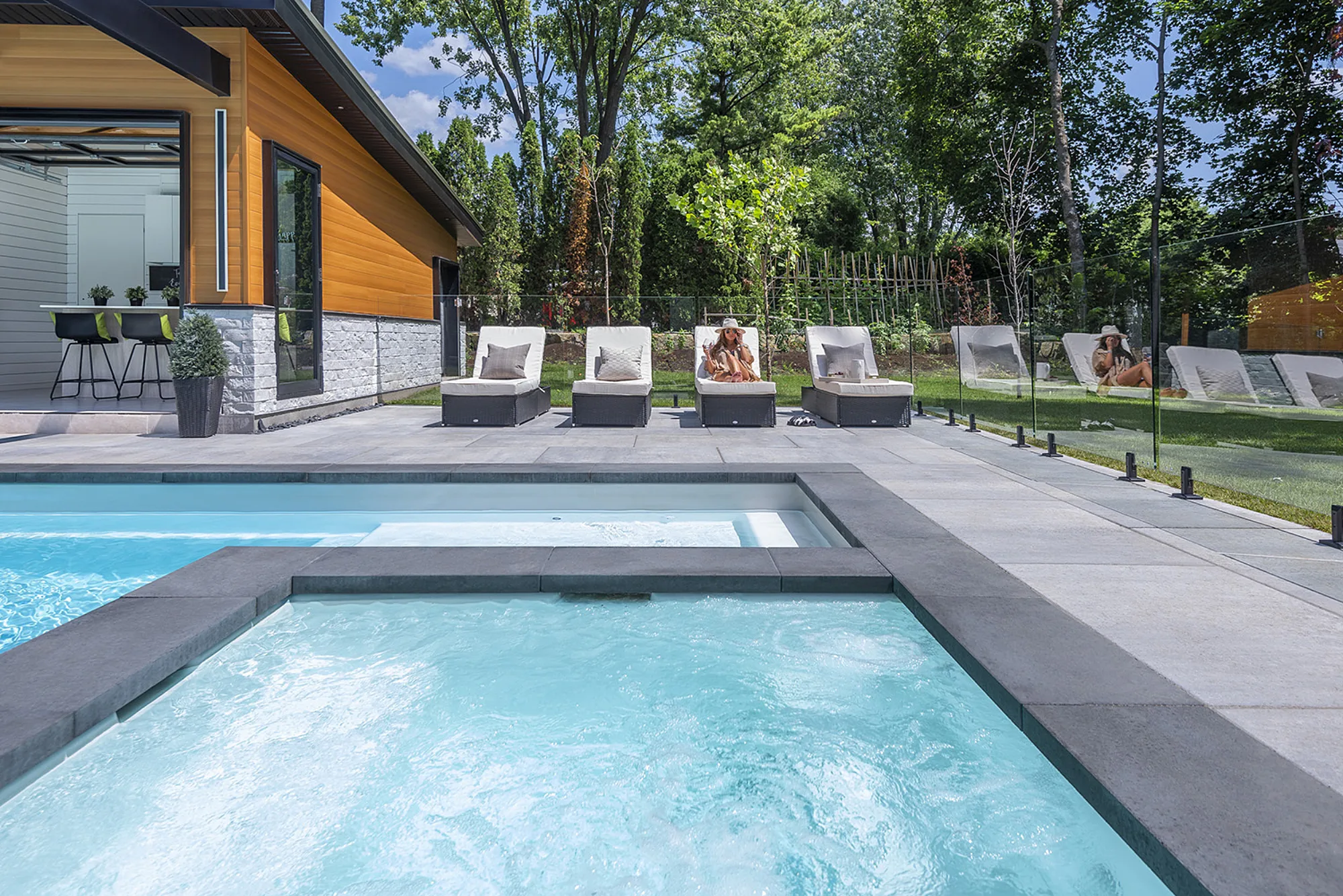When planning or renovating a swimming pool, one of the most important decisions you'll make is choosing the right pool coping. It isn't just a decorative edge; pool coping plays a crucial role in pool safety, functionality, and long-term durability. In this guide, we'll help you navigate the options and choose the best pool coping for your outdoor space.
What Is a Pool Coping?
A Pool coping refers to the material that caps the edge of a swimming pool. It creates a smooth transition between the pool structure and the deck or landscape around it. It helps direct water away from the pool, improves safety by reducing slips, and provides a comfortable surface for swimmers to sit or rest.
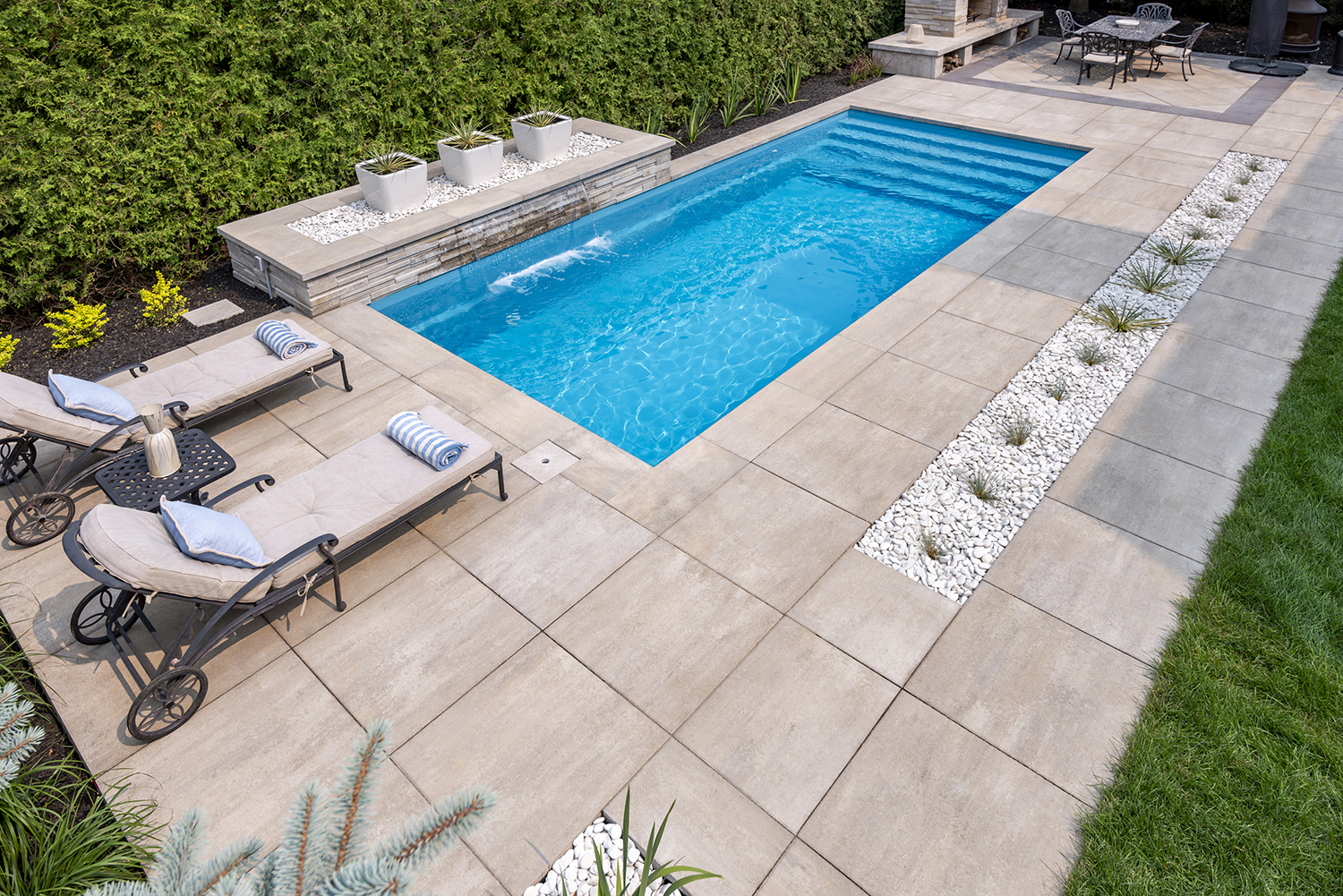
Why Choose Pool Coping Pavers?
While pool copings can be made from various materials like natural stone or granite, pool coping pavers are becoming popular for several reasons:
Durability: Engineered to resist extreme weather conditions, pool chemicals, and constant moisture.
Safety: Rounded edges offer a safer, smoother finish that are ideal for comfortable entry, exit, and safe swimming around the pool.
Design Flexibility: Available in various colors, textures, and styles to suit modern backyard aesthetics.
Ease of Installation: Interlocking pavers are simpler to install and maintain over time.
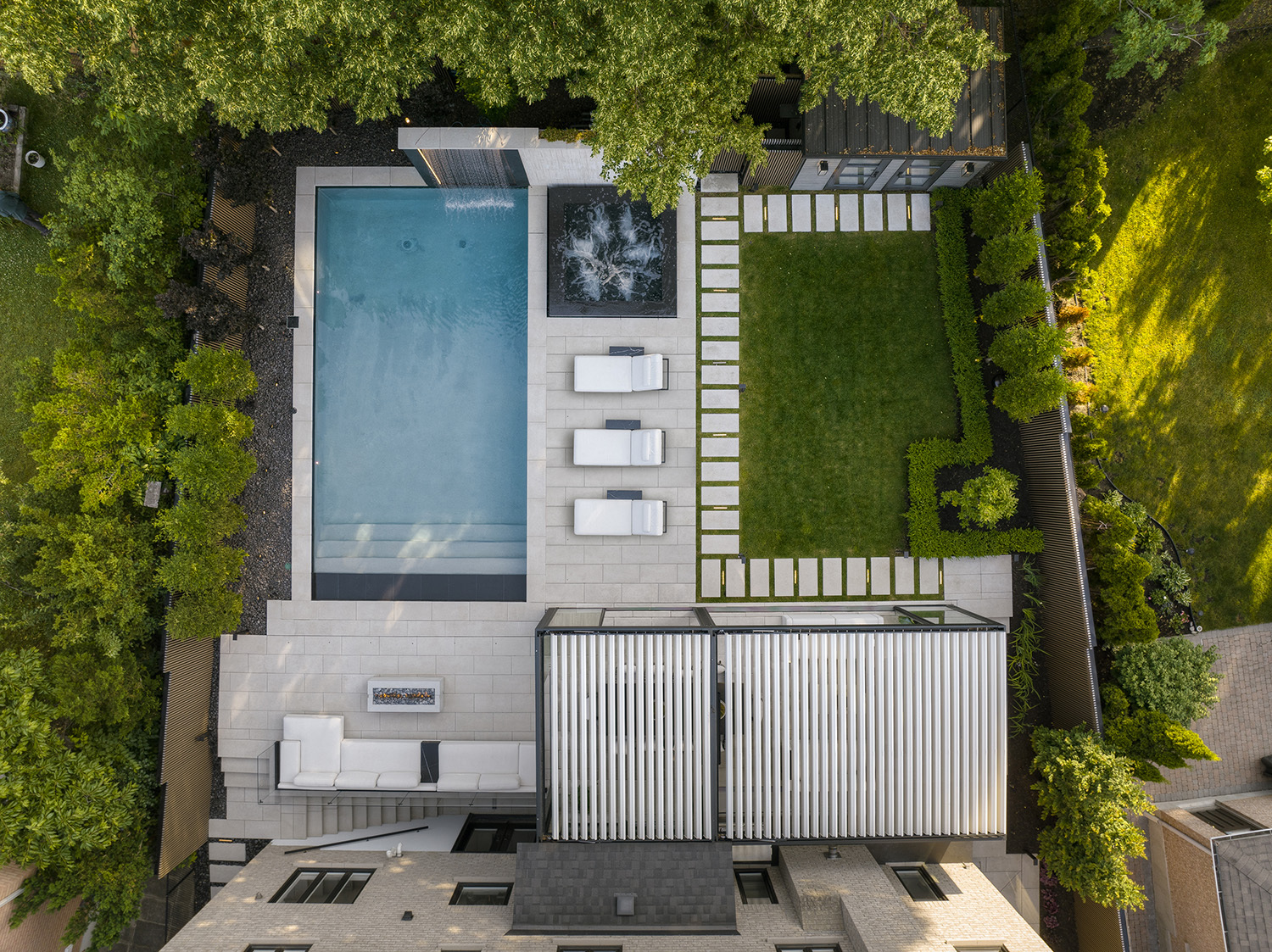
Key Considerations When Choosing Pool Coping Pavers
1. Material Quality
Choose high-density, precast concrete pavers made specifically for pool applications. These are designed for durability and long-term performance in a moist environment.
2. Slip Resistance
Choose concrete pavers because their porous surface absorbs water, making them slip resistant. This makes them a safer option, especially for families with young children or elderly members.
3. Edge Profile
Rounded or bullnose edges not only enhance safety but also improve the comfort of the pool edge for lounging.
4. Color and Finish
Light-colored pool pavers have the ability to reflect heat and remain cool underfoot. They're a stylish, on-trend choice for modern yards and outdoor spaces.
5. Compatibility with Pool Design
Regardless of whether your pool is freeform, rectangular, or includes such built-in elements as spas or waterfalls, select pavers that are cuttable and shapeable to fit perfectly.
Check out the unique pool models offered by our sister company, Azoria pools.
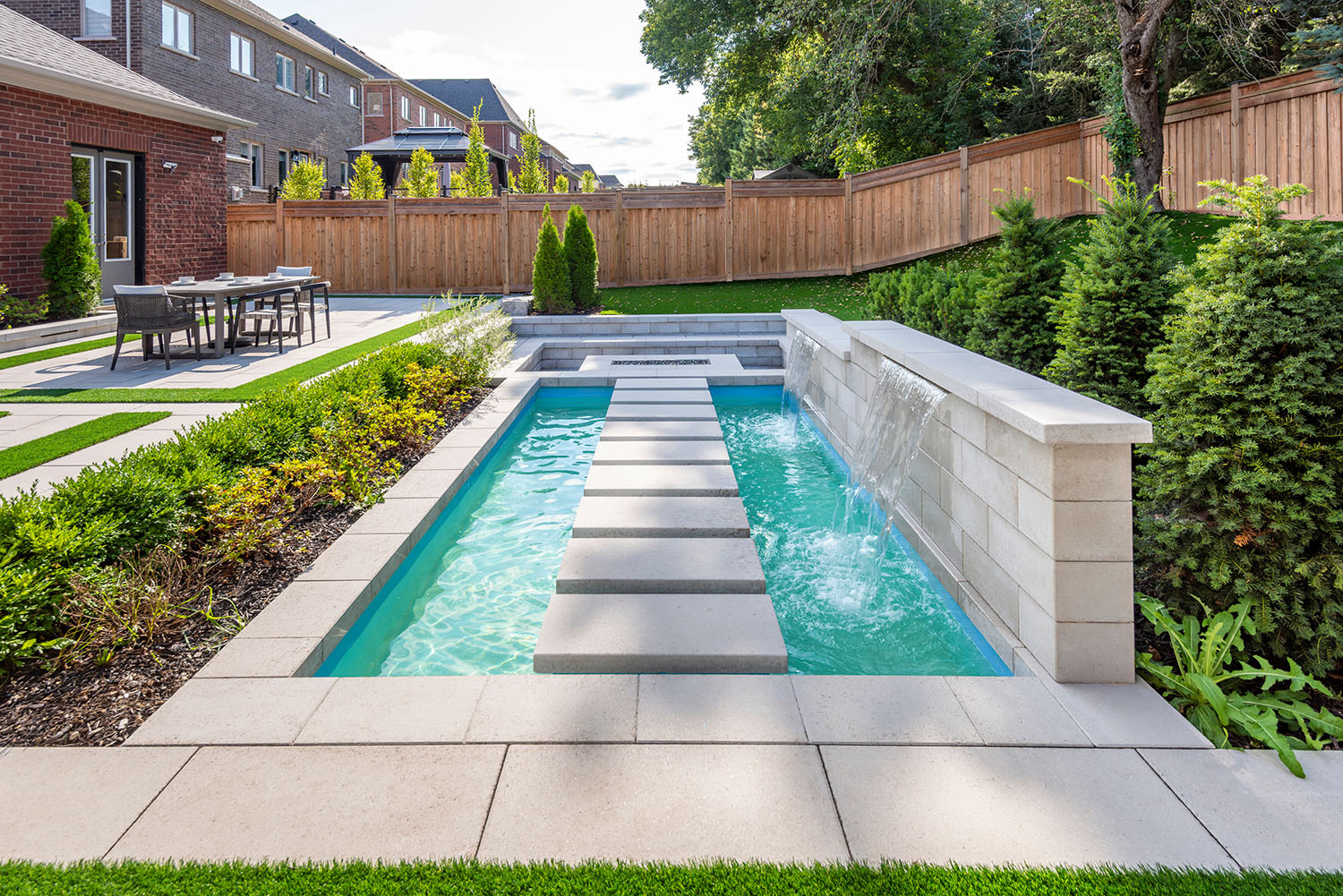
Pool Coping Paver Ideas for a Modern Backyard
Minimalist Design: Large-format coping in smooth neutral tones for a sleek and modern feel.
Contrasting Borders: Use darker coping to create a bold frame around light-colored pool tiles.
Textured Look: Choose pavers with chiseled or brushed finishes for a more natural aesthetic.
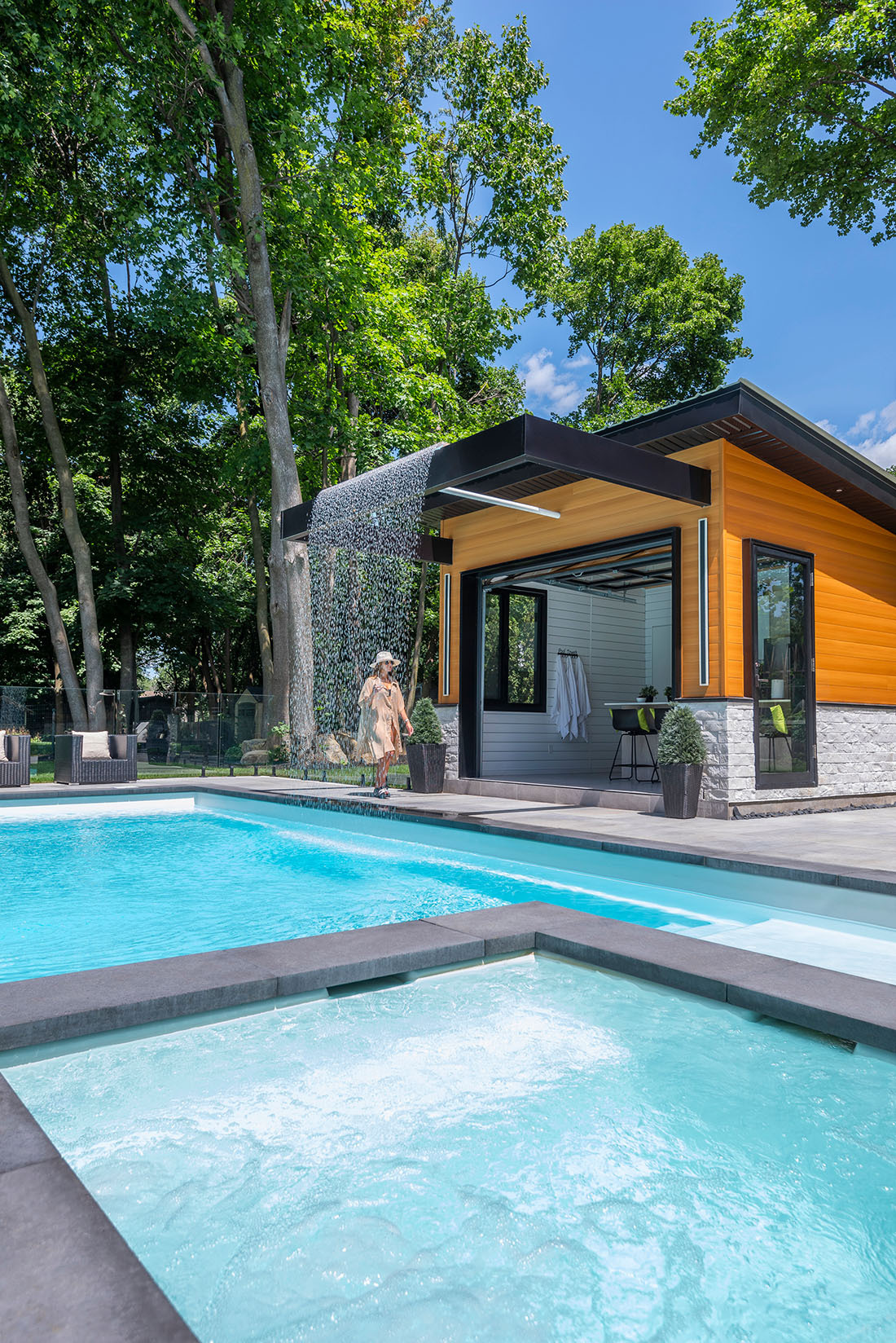
Installation Tips for Pool Coping Pavers
Professional Installer: Always use a professional installer familiar with pool construction.
Proper Drainage: Ensure proper drainage slope away from the pool.
Sealing: Applying a sealant to the pavers can help protect your pavers from discoloration, stains, and wear, especially in high-traffic or exposed areas. It's a smart step to extend their life and keep them looking fresh.
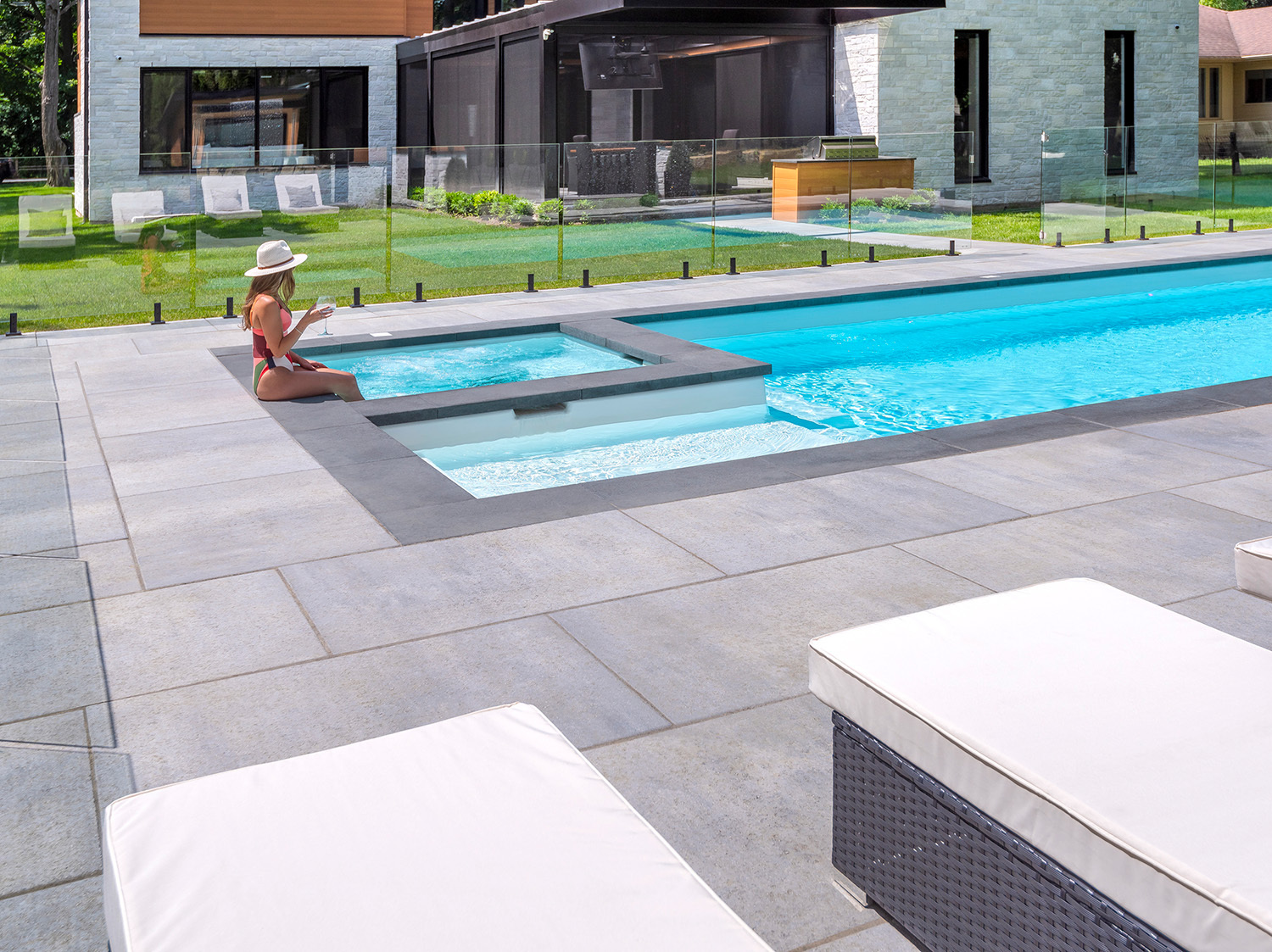
Maintenance and Care for Pool Coping
Regular Cleaning: Keep the coping clean by removing debris and using appropriate cleaning agents for the material, when necessary.
Inspect for Damage: Periodically check for cracks or loose pieces and address repairs promptly to prevent further issues.
Resealing: If your coping is sealed, reapply sealant as recommended by the manufacturer to maintain its protective barrier.
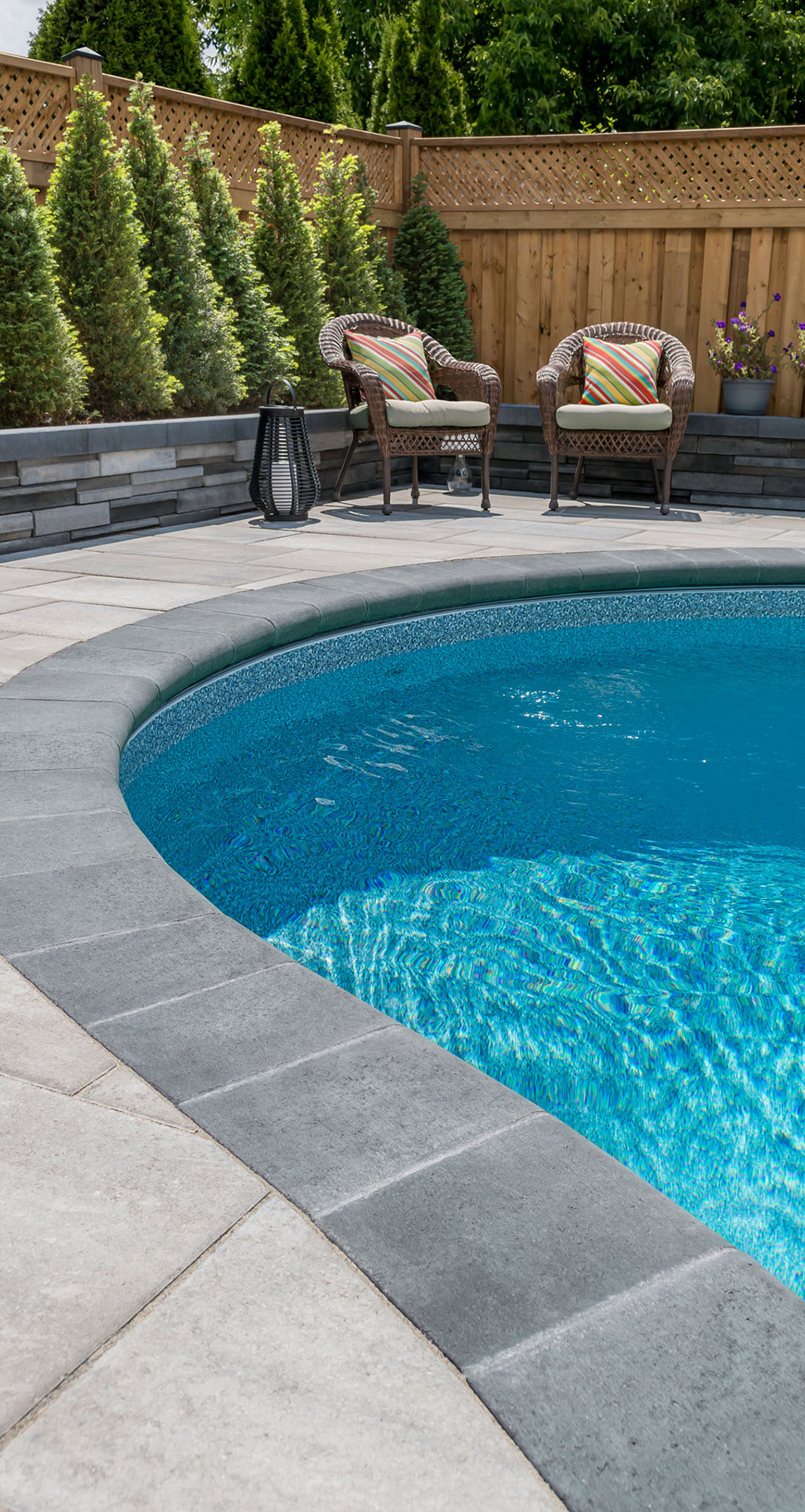
Conclusion
Choosing the right pool coping pavers can significantly improve the look, feel, and function of your swimming pool. Focus on quality, safety, and design compatibility to ensure your pool edge is not only beautiful but built to last. With a wide variety of shapes, colors, and textures available, pool coping pavers offer a reliable and stylish solution for any backyard pool.
Looking to transform more than just your pool?
Explore the Rinox Landscaping Collection for additional paver styles and ideas to enhance your entire outdoor space, from patios and driveways to modern backyard designs.

